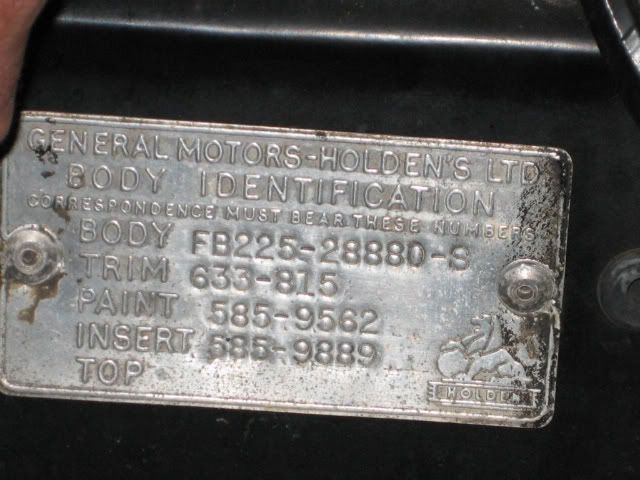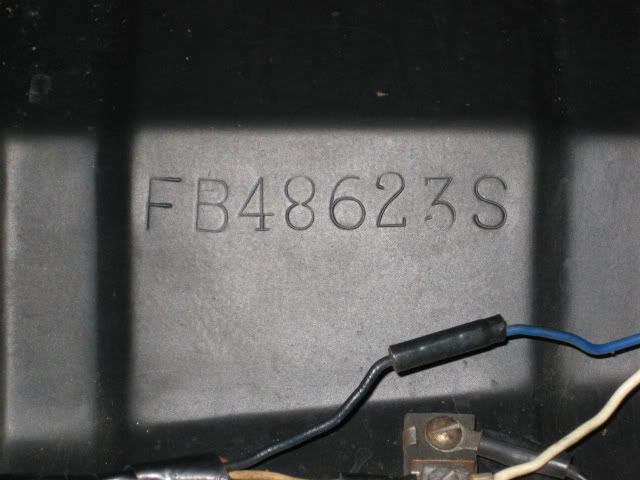Thank you Trev, that is one of the reasons also
There are a few others as well. I will list the once mentioned an more ...
A. Colour and trim codes have the most interest to me in my research.
1. Colours can be most interesting, especially the rare "nitrocellulose/ Duco colours" (pre June 1960). There are colours I am yet to see and maybe they may turn up. Finding a rare original colour it cool though, It is exciting to see a tag (even on a colour changed car), that had a rare colour from the factory just the same. Finding some colours may prove impossible. This is also true of the many, many original "Holden fleet colours" that have all but disappeared. This should add value to these beautiful cars.
2. The most common main colours appear to have been Snowcrest White, Wedgwood Blue, Twilight Turquoise, Seagull Grey, Cameo Beige, Strata Blue and Honey Beige by the plates that have been kindly presented. There are also many colour combinations which have been lost.
3. Nitro/Duco (Pre June 60) colours such as Biscay Green, Buckskin, Royal Glow, Raphael Ivory, I am yet to see.
4. Acrylic/Dulon (Post June 1960) Colours as Ceramic Brown, Coast Ivory, Welland red, I'd love to see an original old finish.
5. Just as exciting as the early FB "nitro colours" (which had that small window of factory application), are the EK Vans and Utes produced at Holden on the same production line as the EJ Holden. The 1962 Paint choices I have seen so far, have been Pittwater Green, Katherine Beige, Silverton Grey, Cottesloe Cream.
6. Eventually we may end up with a register of many colour combination that we can rely on and enjoy.
7. The first three digits of the Trim code, relate to the paint or paint combo to inform the production line painters at glimpse the colour(s) to be applied. A full list of these codes will only be revealed with more ID plates added to the list or a lucky find in GMH records. I am happy to say the blanks are slowly being filled in.
B. Subframe numbers are very important to this list and tie the complete picture together.
1. The Utes and Vans produced during the EJ Manufacture, give us an excellent educated guess, at how many Vans and Utes were produced in total, and assembles in each state. These sometimes unique coloured vehicles, also offer a total production figure for each state of all EKs, as the vehicles still carried EK subframes.
2. Subfames numbers also give us an insight into the states such as Brisbane and Perth, which were not producing Bodies. These help once again with state to state sales figures comparisons.
C. Like subframes, Engine numbers run mostly sequential as the data collected is showing.
1. With this data we are collecting, cars that have had an engine replaced with as an EJ "J" prefix engine number, and "L" prefix FE - FC engine can try to track down and engine that may be close to there original if they so desire.
2. Engine numbers starting at B1001 for FB. A low engine number can offer a date reference if still the original motor. EK numbers at around B175000.
D. Body Numbers. A major source to acquire the build numbers of each shape and dress.
1. How many wagons did they make in standards and specials etc ....
2. What build number did the Nitro finish stop in each state.
3. Are there any proto-types or "No 1" build cars left? this exercise may offer a story or two or even a discovery.
ID Tags also offer some unique secrets like Auto's in standards, Army and other government vehicles, Stamping mistakes, etc.
Once we have a comprehensive list, all the above and many more things will come to light in a very clear and helpful presentation.
Thanks everyone for the help.
Steve Jackson









